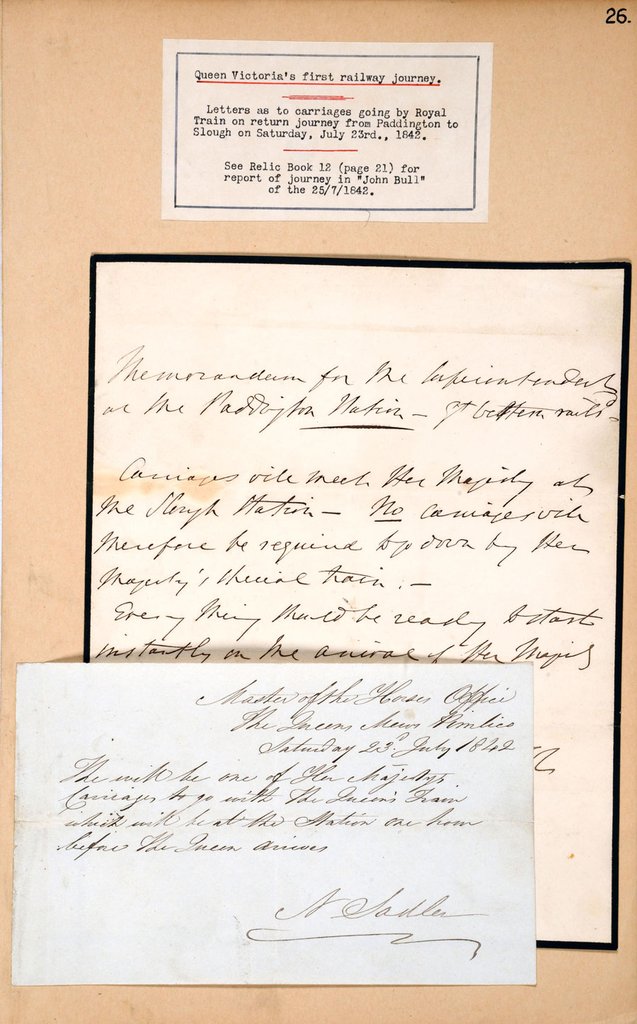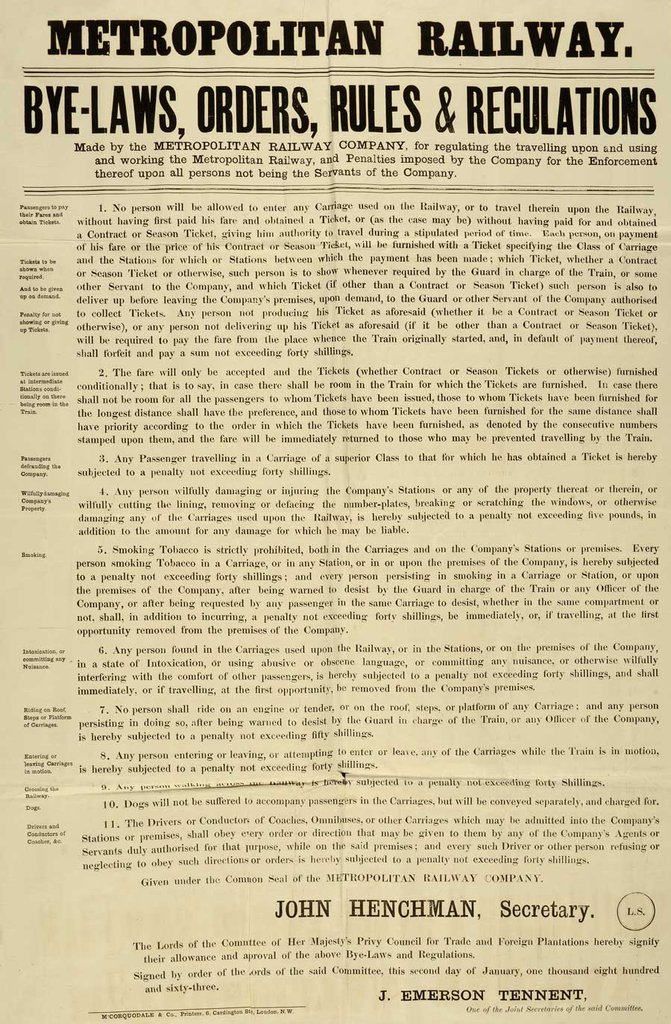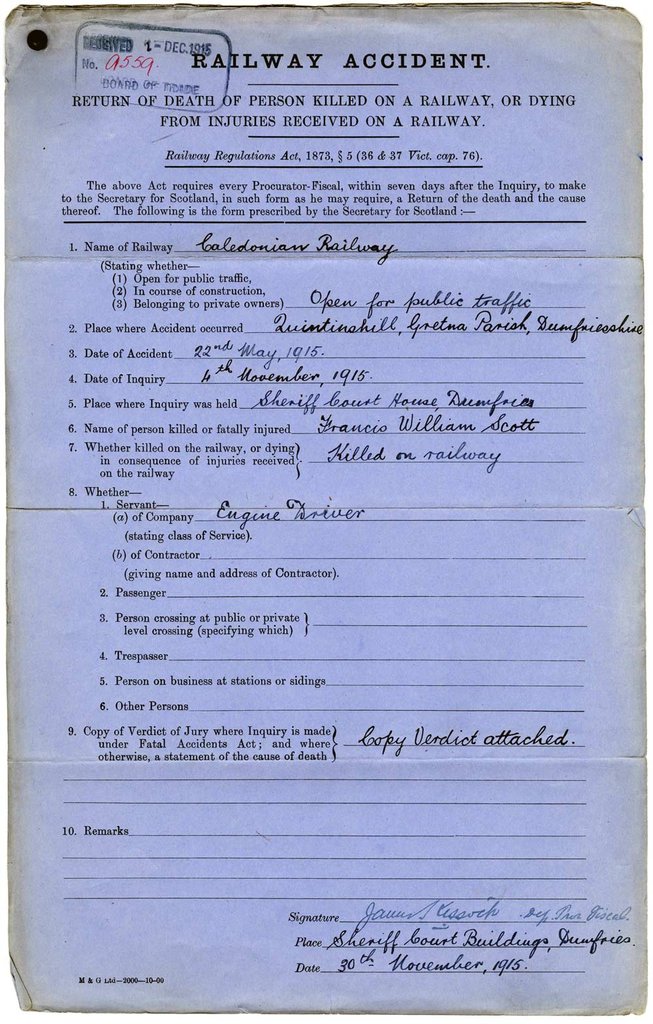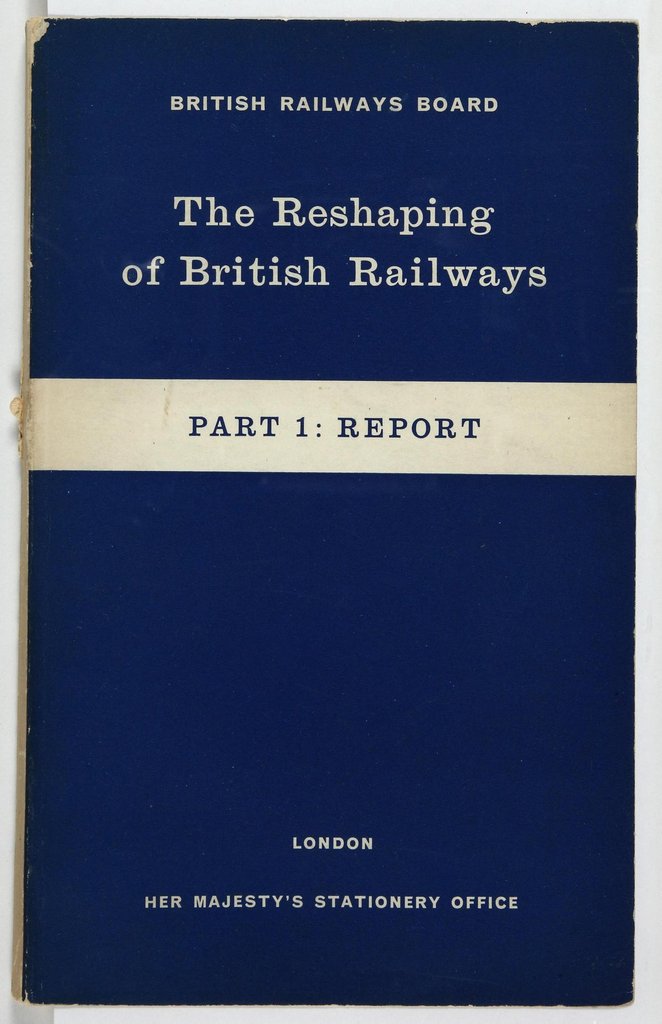Railways
Our rail collection covers the first royal train journey, the world's first underground, and Britain's worst ever railway disaster. We hold records for over 900 pre-nationalisation railway companies, as well as British Rail, including staff records, accidents, posters, timetables, maps and more.
Memos documenting Queen Victoria's first train journey
Date: 1842
Catalogue reference: View the record N/A in the catalogue
Queen Victoria was the first monarch to travel by train, when on 13 June 1842, she boarded the Great Western Railway train at Slough Station. The train was pulled by the engine Phlegethon, and the trip to Paddington Station took 25 minutes. In the cab rode Isambard Kingdom Brunel, the famous engineer and designer of Paddington Station. The Queen enjoyed her ride and wrote in her diary that it was 'delightful and so quick.'
These records are internal memos passed between members of the Great Western Railway and Slough station staff concerning the carriages for the Royal Train.

Metropolitan Railway rules and regulations poster
Date: 1863
Catalogue reference: View the record N/A in the catalogue
On the 10 January 1863, the world's first underground railway opened: The Metropolitan Railway, travelling west to east across London from Paddington to Farringdon. The formal opening involved around 650 VIPs, a banquet at Farrington Station and a speech by local MP Mr Lowe. The following day the line opened to the public when up to 40,000 people tried to experience underground travel for the first time. Chaos ensued, not helped by the excess of steam and smoke from the steam engines in the tunnel.
This poster outlined the rules of travel, which included no smoking, no 'riding on roof' and that ‘dogs will not be suffered to accompany passengers in the carriages, but will be conveyed separately, and charged for’.

Quintinshill rail disaster accident form
Date: 1915
Catalogue reference: View the record N/A in the catalogue
Quintinshill in Dumfriesshire, Scotland, was the location of Britain's worst ever railway disaster. On 22 May 1915, five trains were involved in a collision on the Caledonian Railway resulting in a huge fire and over 220 deaths, with a further 240 people injured. Most of the victims were soldiers from the 1/7th Battalion, the Royal Scots, travelling from Larbert on their way to the front to fight for their country in the First World War. This 'railway accident' form documented the disaster.
The cause of the crash was put down to poor working practices on the line, and the intensity of the fire was due to the wooden structure of the carriages and the gas carried in the rolling stock for lighting. A plaque can be seen on the wall of Larbert Railway Station, in memory of the First World War soldiers of the Royal Scots who died in the disaster.

Dr Beeching's The Reshaping of British Railways report
Date: 1961–1963
Catalogue reference: View the record N/A in the catalogue
On 27 March 1963, Dr Beeching, then Chairman of British Railways, published his report The Reshaping of British Railways. His aim was to make the railways pay for themselves by cutting unprofitable lines and boosting both rail and road transport by making them work together. Today, they are remembered as the Beeching cuts.
Unfortunately, this necessitated closing 2,363 stations and 5,000 miles of track in mainly rural areas to be replaced, he hoped, by bus and private transport. As a scientist Beeching took a no-nonsense approach to the problem, perhaps ignoring the social consequences of his plan. Many lines that were closed subsequently reopened as heritage railways, thus preserving some of the golden age of railways.
